Use the Links page to specify how to make the link moves between the cutting moves in a toolpath.
Different types of link moves are available for connecting cutting moves.
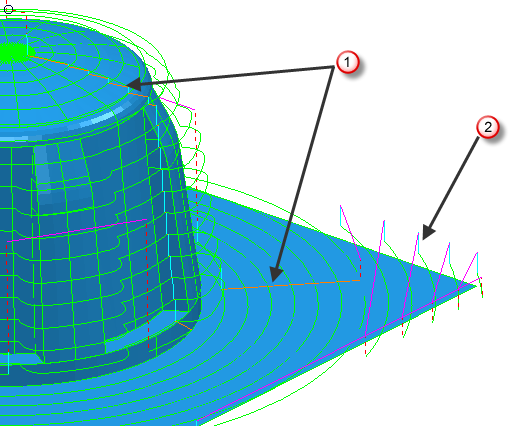
 Short links
Short links
 Long links
Long links
Short/Long Threshold — Enter the distance at which a short link becomes a long link.
Short — Select the type of link moves to connect consecutive cutting passes for links shorter than the Short/Long threshold value.
- Safe — The tool moves to the safe area before making the link move.
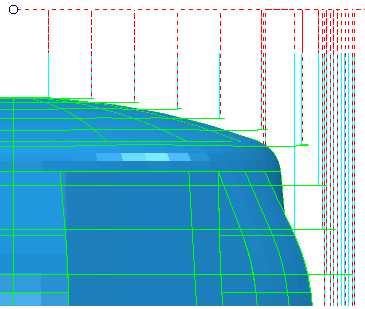
- Incremental — The tool descends at rapid feed from the safe area to the specified incremental distance above the target point, and then plunges the remaining distance. If you have a multi-axis toolpath, the tool retracts a set distance along the tool axis and then retracts to the safe area. It comes down from the safe area and completes the approach along the tool axis. The distance moved along the tool axis is controlled by the Plunge Distance on the Heightspage.
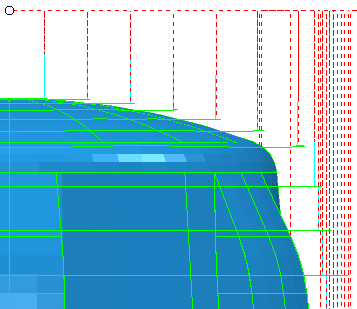
- Skim — The links traverse clear of the part by the specified incremental distance, descend at rapid feed to the specified incremental distance above the contact point, and then plunge the remaining distance.

- On surface — The links follow the surface of the triangulated model, and so prevent gouging.
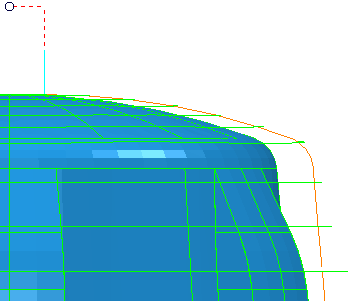
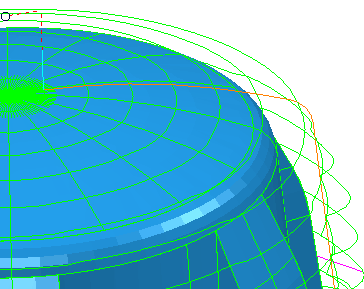
- Stepdown — The links traverse clear of the part by an amount, so that with the specified stepdown the vertical descent will reach the next contact point.
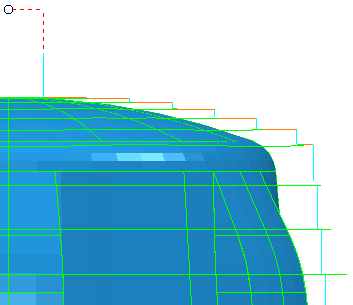
- Straight — Straight-line moves are used. These straight moves between raster paths could cause gouging over curved areas of the model.
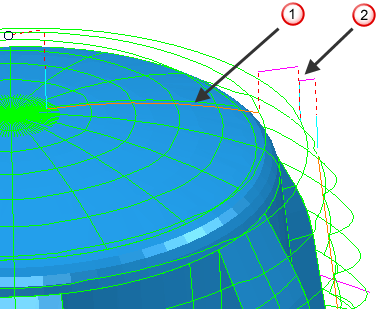
 Short link of Straight
Short link of Straight Default link of Skim
Default link of SkimWhere the short links gouge the Default link is used.
- Circular arc — the tool moves are circular.
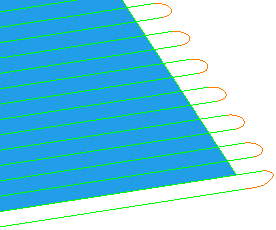
Long — Select the type of link moves to connect consecutive cutting passes for links longer than the Short/Long threshold value.
- Safe — The tool moves to the safe area before making the link move.

- Incremental — The tool descends at rapid feed from the safe area to the specified incremental distance above the target point, and then plunges the remaining distance. If you have a multi-axis toolpath, the tool retracts a set distance along the tool axis and then retracts to the safe area. It comes down from the safe area and completes the approach along the tool axis. The distance moved along the tool axis is controlled by the Plunge Distance on the Heightspage.

- Skim — The links traverse clear of the part by the specified incremental distance, descend at rapid feed to the specified incremental distance above the contact point, and then plunge the remaining distance.

Retract and approach moves
This toolpath has Retract and Approach Moves set to 0:

This toolpath has Automatically extend selected:

This toolpath has Automatically extend deselected and a Retract and Approach distance of 10:

 Retract along tool axis.
Retract along tool axis.
 Retract normal to the safe plane.
Retract normal to the safe plane.
Along — Select the orientation of the links.
- Tool axis — The retract and approach moves have the same orientation as the tool axis.
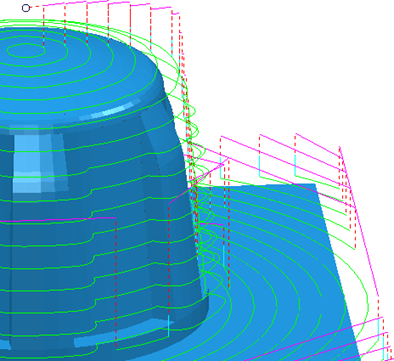
- Contact normal — The retract and approach moves are normal to the contact point (or normal to the Leads In/Out). This can be useful for tipped disc cutters, where moving along the tool axis is not possible (for example, when undercutting).

Automatically extend — Select to lengthen the retract and approach moves made within rapid links. This enables the moves to reach the surface, over which the rapid or skim moves are made. This also lengthens the initial move at the start, and the final move at the end.
Maximum length — Enter the maximum length of the extension.
Retract distance — Enter thelength of the Retract move.
Approach distance — Enter the length of the Approach move.